Guess what?? We projected the mural tonight and it is ready to paint!!! Had to, because it is going to rain on Thursday and Friday. Look! There were some tall young men who were very very helpful – Jarson, Joshua (I think that was Mr. Blue Shirt’s name!) and Jared, who is one of my drawing students. That is Mickey securing the ladder with his foot.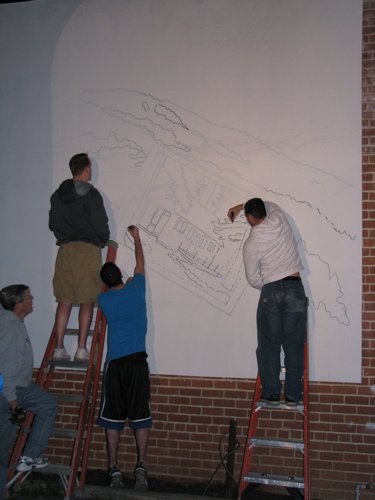 Betsy can draw well – she has been helping me on this project from Day One and got the entire event organized at the last moment today!
Betsy can draw well – she has been helping me on this project from Day One and got the entire event organized at the last moment today! 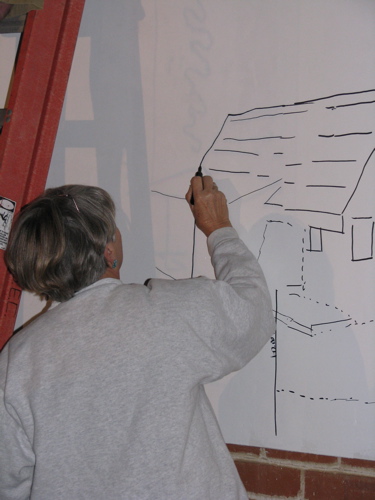 These guys look like clowns, but Bill is the president of the Mural Team who changed his schedule to get ready this evening on a moments notice, and Larry? he pushed the scaffolding along real well!
These guys look like clowns, but Bill is the president of the Mural Team who changed his schedule to get ready this evening on a moments notice, and Larry? he pushed the scaffolding along real well!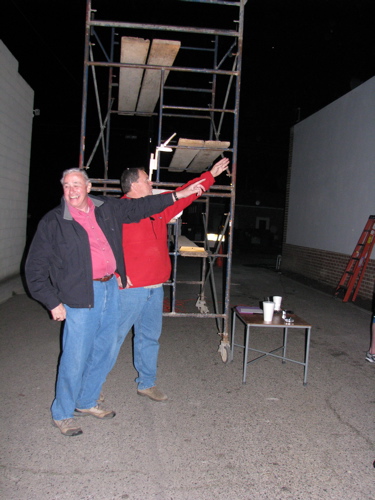 These are the official Mineral King Consultants who made sure everything looked accurate. Good thing they were here and noticed that everything was getting smaller and lower instead of larger and higher! (that projection method has some weak points.)
These are the official Mineral King Consultants who made sure everything looked accurate. Good thing they were here and noticed that everything was getting smaller and lower instead of larger and higher! (that projection method has some weak points.) 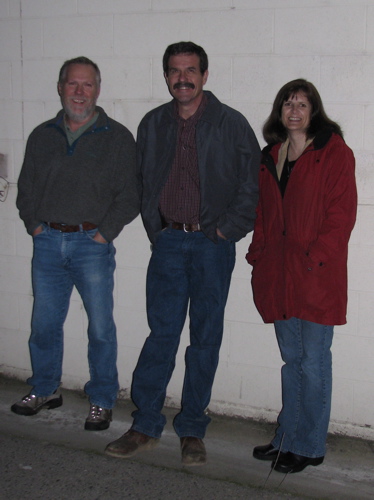 The maquette (model painting) was a great help to correct for projector distortion and verifying accuracy.
The maquette (model painting) was a great help to correct for projector distortion and verifying accuracy. 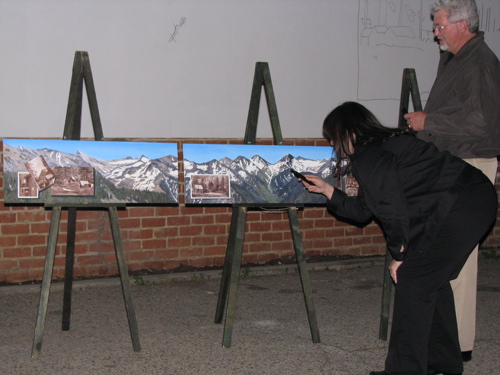
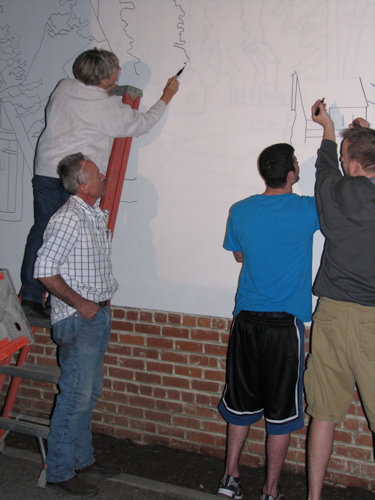 And this is the final panel of the 10 required to cover the entire wall. Unfortunately, there is about 5 feet of wall remaining on the left side, so tomorrow I will be looking through photographs to decide how to fill that space! All that planning and still a bit of a gap – flexible schedule, flexible design!
And this is the final panel of the 10 required to cover the entire wall. Unfortunately, there is about 5 feet of wall remaining on the left side, so tomorrow I will be looking through photographs to decide how to fill that space! All that planning and still a bit of a gap – flexible schedule, flexible design!
Projection
First published in January 2009
Remember overhead projectors? That is the device we hope to use to project the image on the wall. I spent 4-1/2 hours tracing the model painting of the mural onto a roll of tissue paper (the kind called “flimsy” by architects). Today I found back-up bulbs for the projector, bought a couple of boxes of magic markers, and had my tracing converted to a series of 10 transparencies. 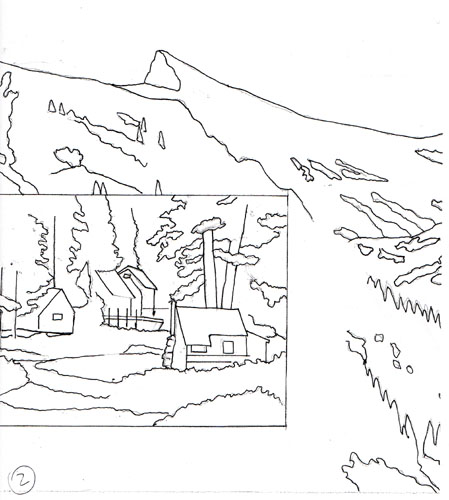 The projection takes place after dark with lots of people manning Magic Markers. The process ensures that the mural will match the model painting that has been approved. The model painting is called a “maquette”, which actually means a 3 dimensional model, but we don’t have an adequate word for a 2 dimensional model. The Mural Team requires an accurate to-scale painting before giving the go-ahead to an artist, and the artist is supposed to follow that maquette to a tee!
The projection takes place after dark with lots of people manning Magic Markers. The process ensures that the mural will match the model painting that has been approved. The model painting is called a “maquette”, which actually means a 3 dimensional model, but we don’t have an adequate word for a 2 dimensional model. The Mural Team requires an accurate to-scale painting before giving the go-ahead to an artist, and the artist is supposed to follow that maquette to a tee!
On my previous murals, I simply drew a small to-scale sketch and then marked off the centers of the painting surface and began drawing with my paintbrush. I thought 80″ x 80″ was huge.
Next, the Seatrain (20′ x 8′) was stunningly massive.
Finally I began the one on 6 4’x8′ panels and could hardly grasp the grandeur of it all. (Silly girl, Trix are for kids!) That one on panels was difficult because the design process hadn’t been fully solved before attempting the panels.
The Mural Team of Exeter has much experience (2 dozen or so murals since 1996) and knows that the design process has to be completed and adhered to in order to have any sort of control over their outdoor gallery. (I fully agree with this because I was the President of the Mural Team when we put these rules into place.)